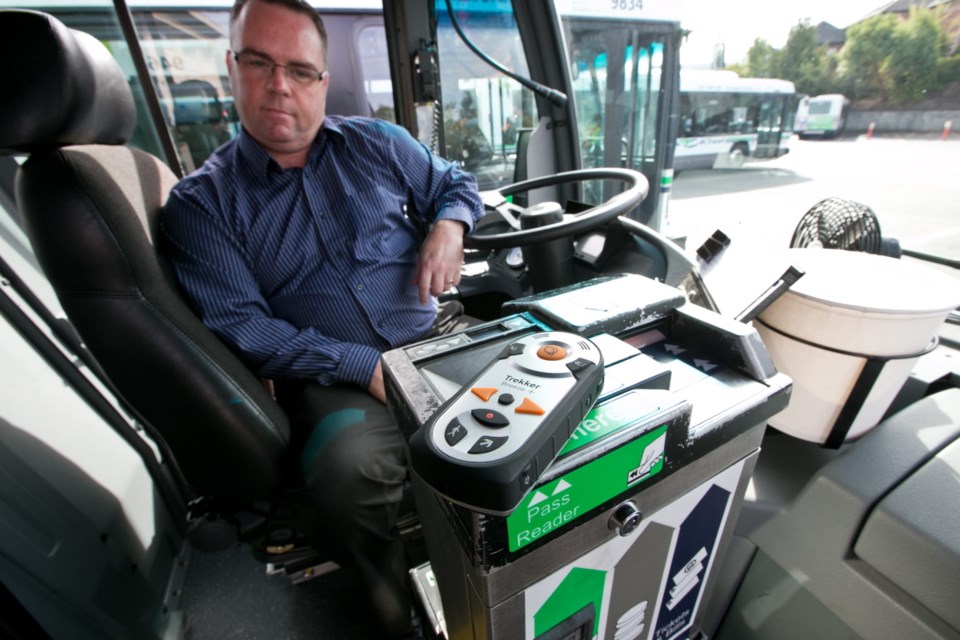The first B.C. Transit buses equipped with an automated stop-announcing system are now on the road, 15 years after a Victoria-based advocacy group first started calling for such a system.
The GPS-based Trekker Breeze+ is in place on up to 15 buses, and will eventually be installed on the entire 280-bus Greater Victoria fleet. B.C. Transit spokesman Mike Russell said a total of 25 buses should be fitted with the device by the end of the week.
The move comes three years after a B.C. Human Rights Tribunal ruling that directed B.C. Transit to make stop announcements in response to complaints by people with impaired vision. The company responded by directing drivers to make the announcements, but their union, Unifor Local 333, said that practice was distracting and unsafe for drivers, while blind passengers indicated they were anxious about alienating drivers.
Russell said having the “voice enunciators” will improve service for all passengers, especially those with visual impairments.
“These enunciators will allow people to hear the stops within 50 metres of their cross streets and give them plenty of time to notify the operator and get off the bus.”
A computer-generated voice calls out the streets and occasional landmarks and the volume controlled by drivers. “It really depends on the amount of people on the bus or any other factors.”
The devices cost $1,000 per bus, with the overall system estimated at just under $400,000.
The human rights complaint was filed by the Canadian Federation of the Blind.
Oriano Belusic, a Victoria representative of the organization, said it was “fantastic” that buses equipped with the system are finally on the road. “That’s what they promised and it looks like they’re delivering,” he said Wednesday. “It’s been a long time coming, a long time coming.”
Belusic said he expects vision-impaired passengers will be testing the buses out and possibly suggesting tweaks in the next few week.
“Probably, I’ll start gambling a little bit [today] to see if I can run into one,” he said. “We’re quite pleased and excited they’re actually being installed.”
Union president Ben Williams said the installation of the devices is a positive development.
“It’s definitely a step in the right direction, to put to the rest the concerns, the safety issues that we had,” Williams said. “We’re hopeful that it will resolve the issues and it will meet the needs of the visually impaired and everyone else that may be able to be assisted by such service.”
Calling out stops is a challenge for drivers, Williams said, adding that some don’t do it because of their safety concerns.
“On average, a driver would have anywhere between 300 and 650 different, unique stops that they would be required to call out on a daily basis.”
Russell said it’s becoming standard for transit systems to call out locations, but “as far as I know, we’re the only ones using the Trekker Breeze+ in North America.”
“It’s originally designed as a device that you can walk with, that will let you know where landmarks or cross streets are, but we’ve been able to work with the company to adapt it to suit our needs here at B.C. Transit.”



